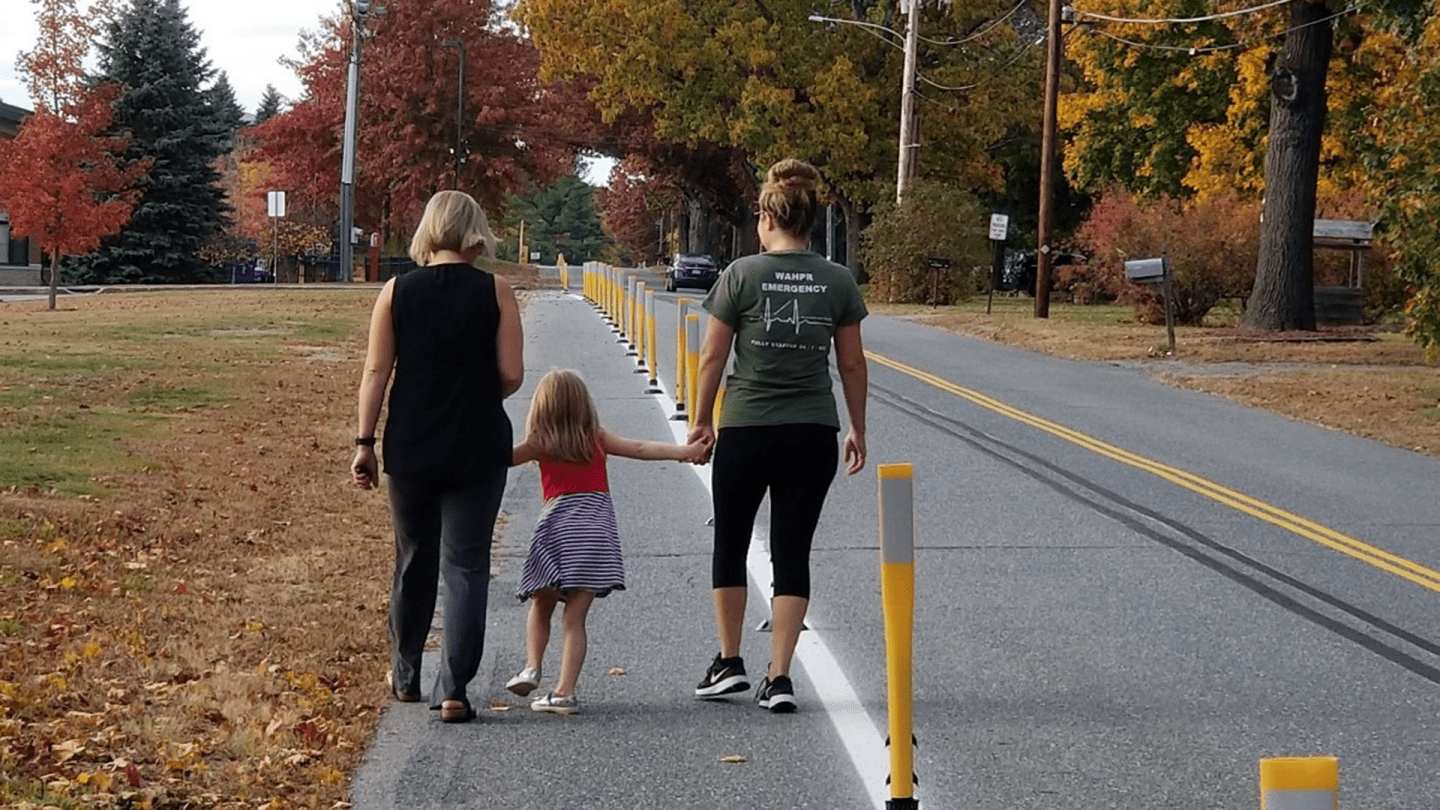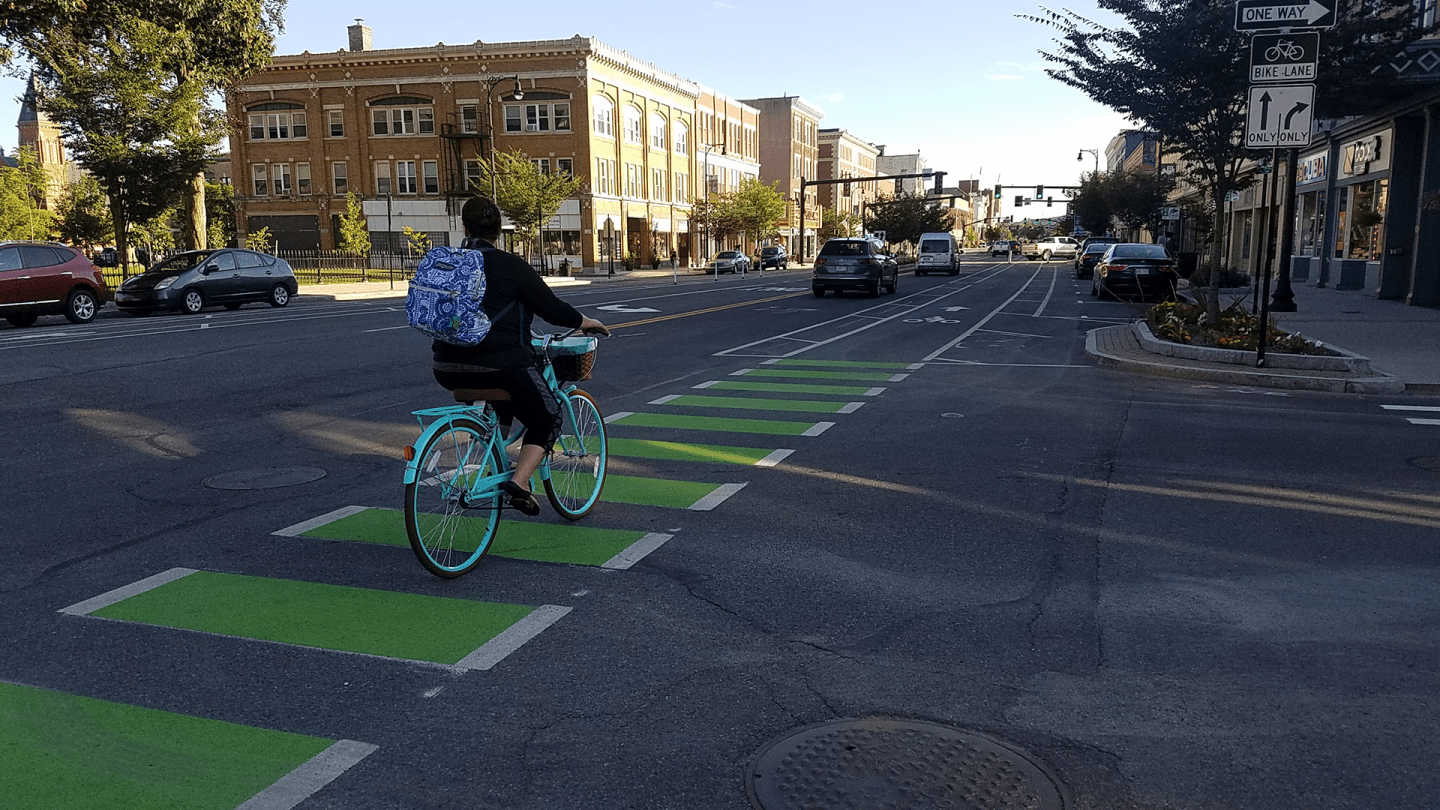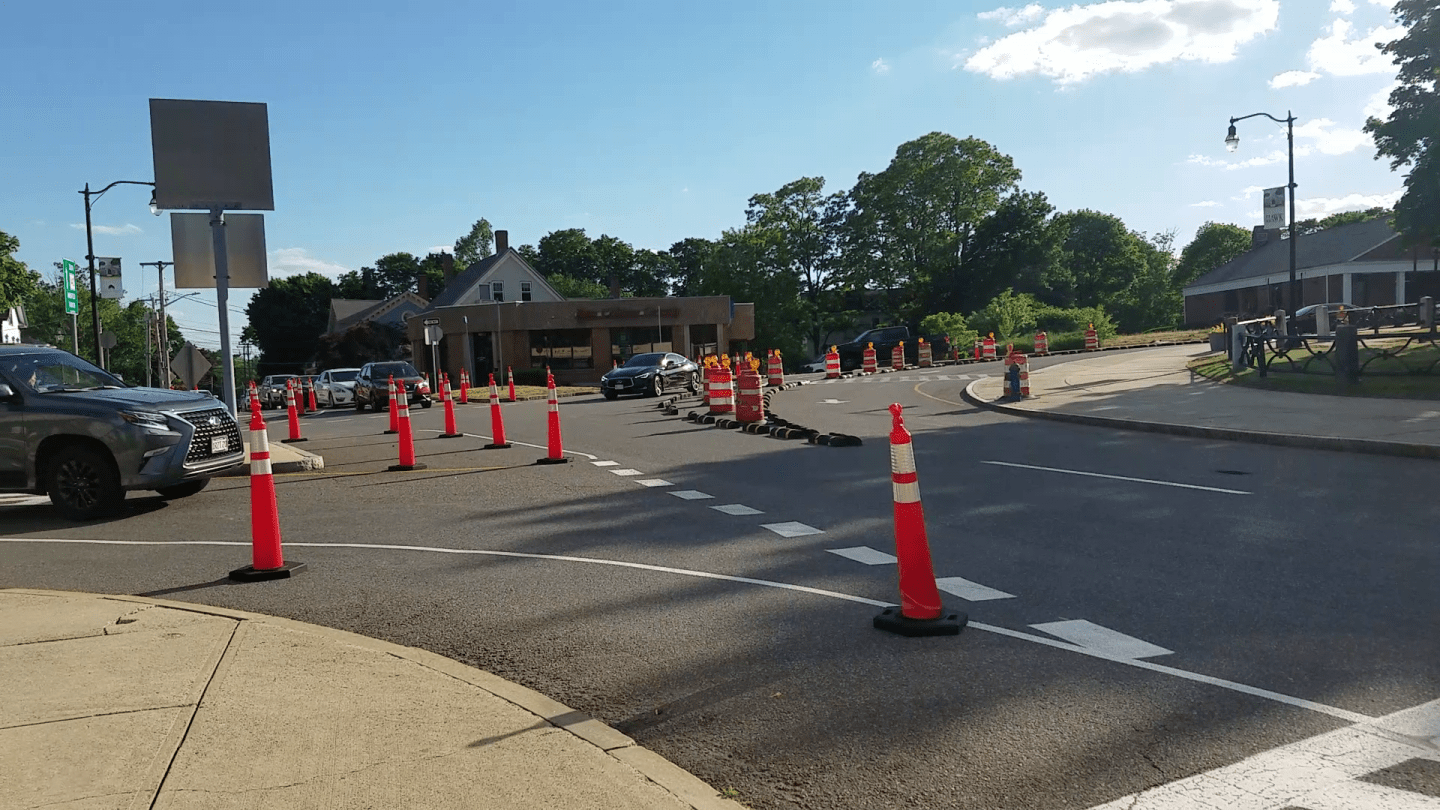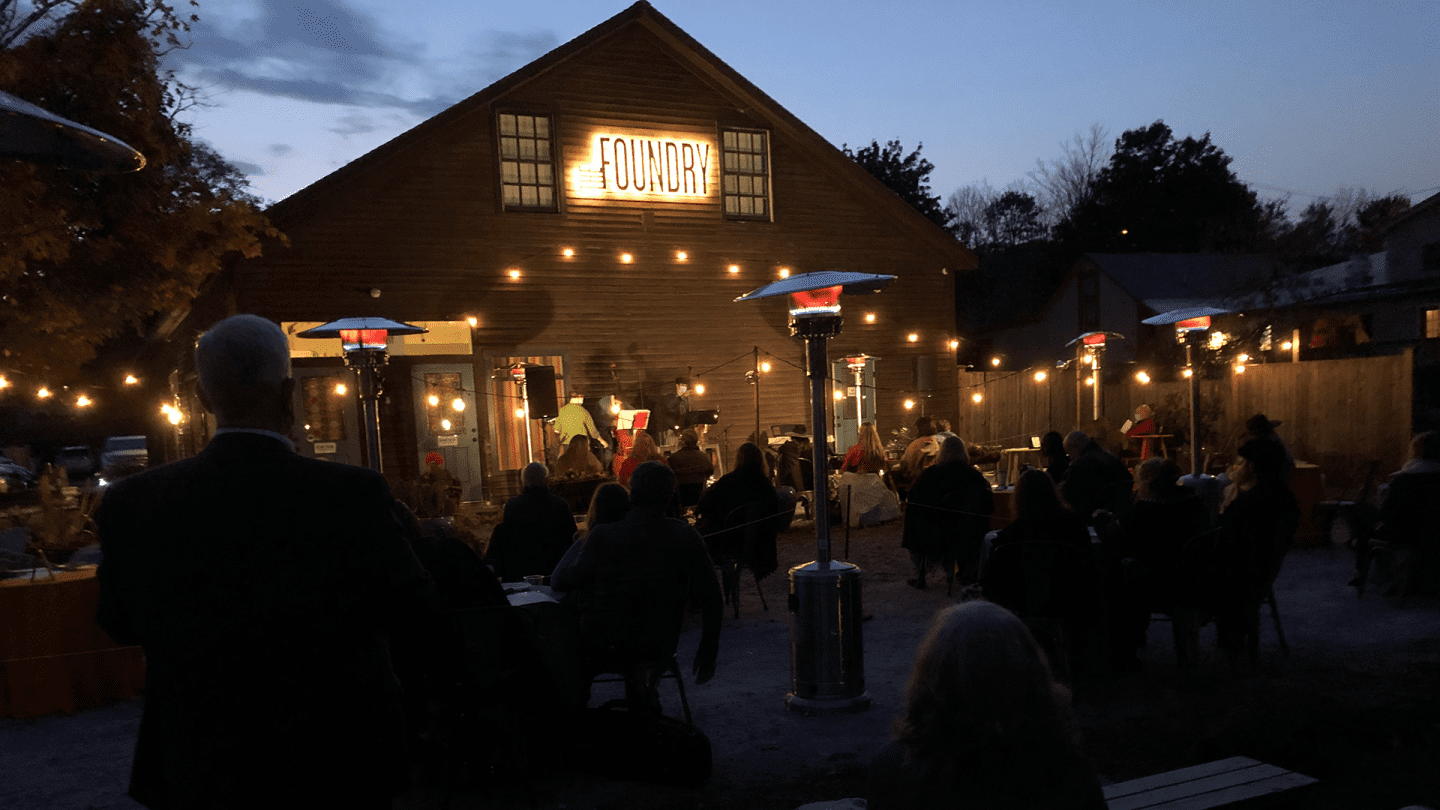January 29, 2022
New Report Measures the Impact of Quick Build Projects Across Massachusetts
From outdoor dining installations to parklets to bike and bus lanes, quick build projects have flourished worldwide during COVID-19, continuing to get more creative and effective in providing space for gathering, shopping, eating, and recreating during the pandemic.
Quick build projects offer several benefits that don’t need to be measured to be understood. A temporary installation is an opportunity to try something new without getting caught in formal processes that can stretch projects out to years before being implemented. It gives community members the chance to test out a design without committing to it long-term, which can lead to valuable feedback and the opportunity to nimbly adjust the design.
However, two years into the pandemic, we’re ready to also understand the measurable outcomes of these projects. In addition to anecdotal benefits, how have quick build installations impacted travel patterns, shopping and dining habits, and safety by the numbers?
Kittelson worked with the Barr Foundation and the Lawrence & Lillian Solomon Foundation to analyze the impact of quick build projects implemented in 23 municipalities throughout the state during 2020 and 2021. The findings support that quick and often simple projects can indeed yield big results.
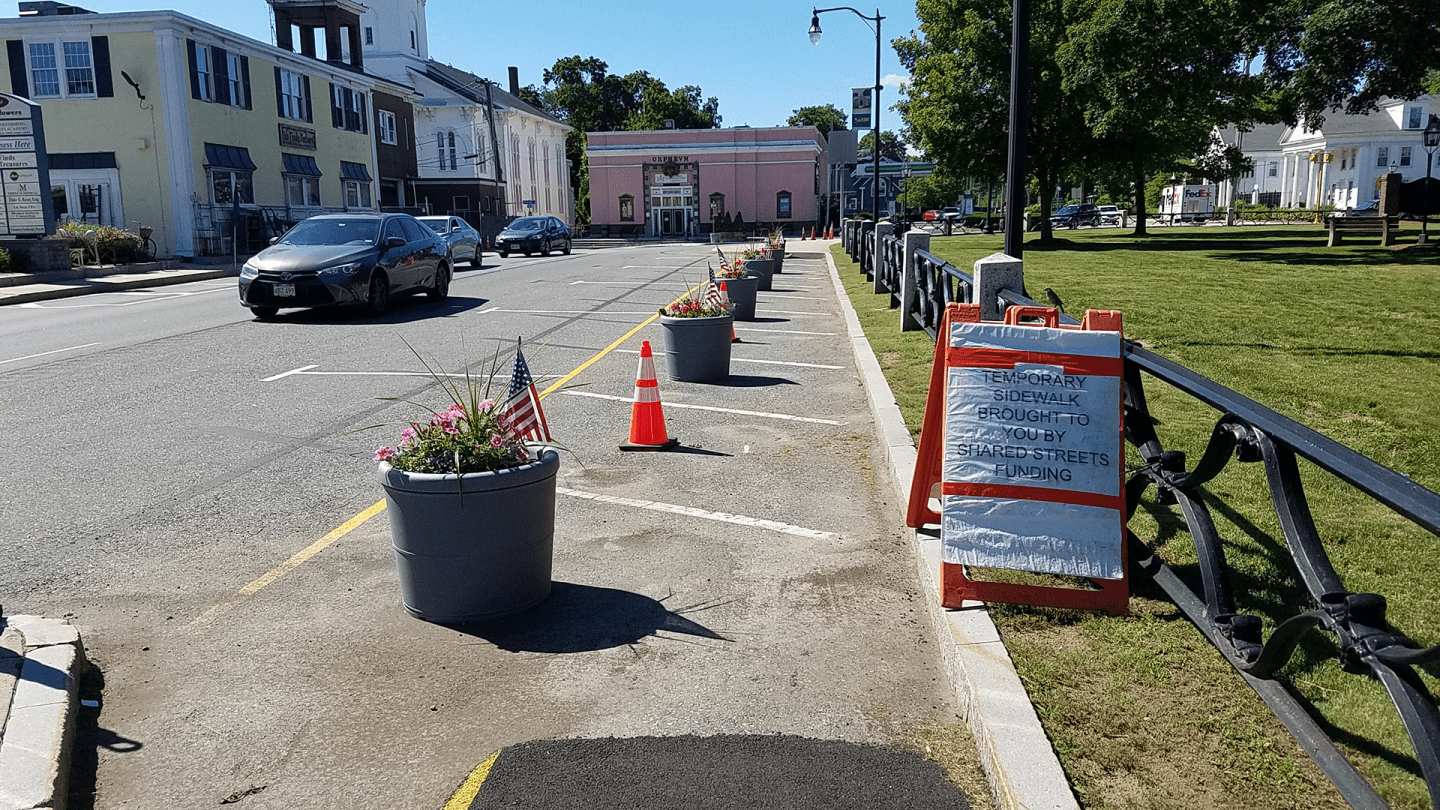
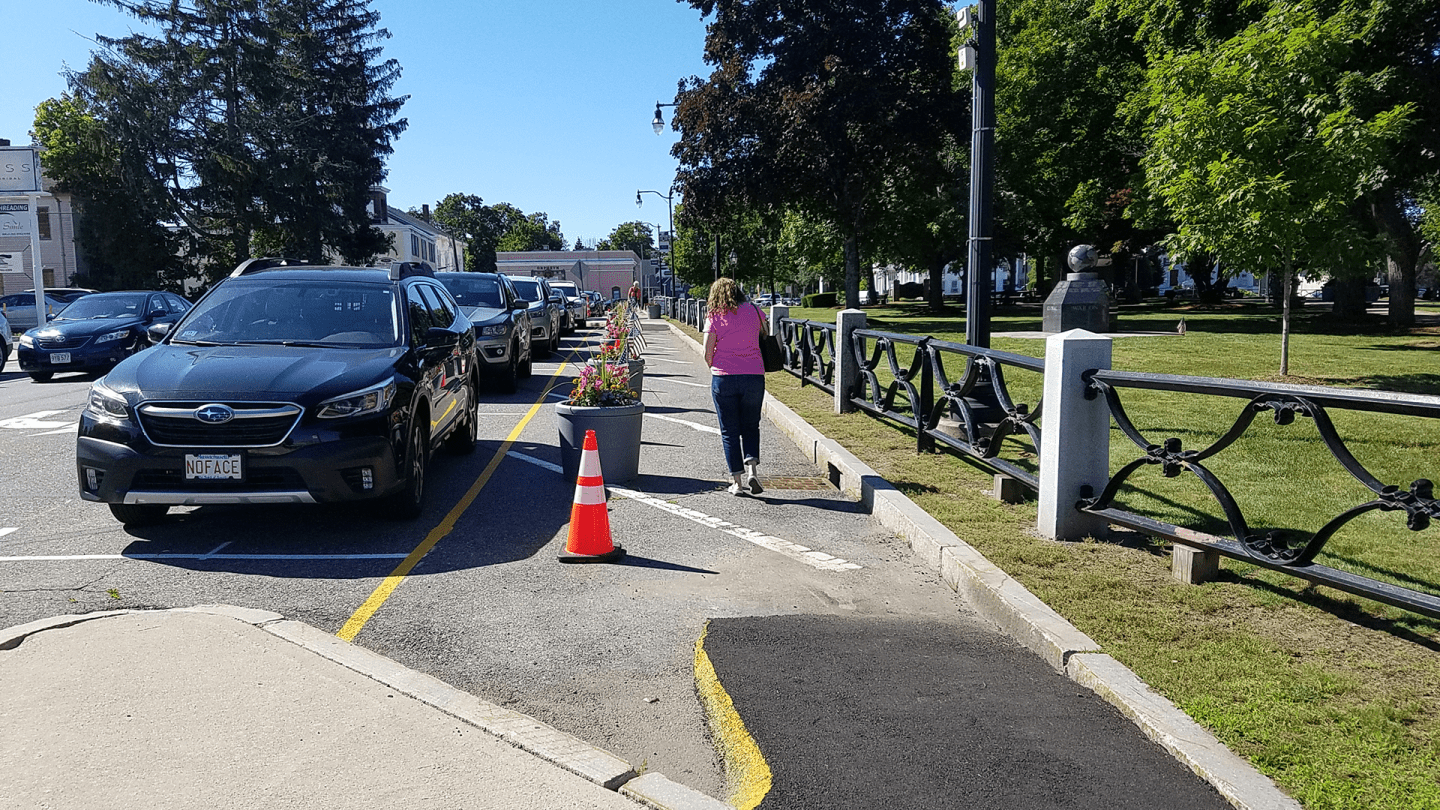
Quick Build Transformations in Massachusetts
Many of the projects evaluated were possible because of MassDOT’s Shared Streets and Spaces Grant Program, an emergency relief program that provides funding to municipalities and public transit authorities to quickly implement improvements to sidewalks, curbs, streets, bus stops, parking areas, and other public spaces. MassDOT established the program in response to COVID-19, while building on the state’s previously identified goals for sustainable transportation and safety.
Projects are selected for funding based on criteria that considers alignment with the program goals of supporting public health, safe mobility, and strengthened commerce, with priority given to projects located in environmental justice areas. Technical assistance is funded by the Barr Foundation, whose goal is to help helping grantees with limited resources access MassDOT’s program. Kittelson, along with Toole Design and Stantec, provides technical assistance.
In 2020 and 2021, hundreds of quick build projects turned streets and parking lots into outdoor dining, repurposed vehicle travel lanes for buses and bikes, and made pedestrian crossings shorter, vibrant, and more visible through murals, planters, and other festive installations. Kittelson team members enjoyed providing technical assistance on several of these projects, including:
- A contraflow bike lane in Sterling that turns a one-way street for cars into two-way connectivity for bikes
- A “quick sidewalk” in Sterling (using flexposts and paint to create a six-foot walking zone and one-foot buffer) to create a more safe and comfortable walking space near a senior center and elementary school (pictured below)
- A half-mile long dedicated bus lane on North Common Street in Lynn
- A buffered bike lane in Pittsfield that creates separation from both moving and parked cars (pictured below)
- The use of roundabout design techniques to eliminate turning movement conflicts at the Foxborough Commons (pictured below)
- An outdoor event space for a performing arts center in West Stockbridge (pictured below)
Photo credits (left to right): Town of Sterling, Kittelson, Kittelson, Town of West Stockbridge
Measuring the Impact of Quick Build on Transportation and the Economy
After the first two rounds of this grant program, the Barr Foundation and the technical assistance team turned our attention to tracking and reporting outcomes. This began with developing performance measures and methods for tracking the impact of the project-such as user intercept and business owner surveys, speed studies, and travel time comparisons-that can easily be replicated to assess similar quick build projects in the future. We then applied these measurements to a selection of projects installed during the pandemic.
Here’s what the analysis showed:
- Reallocating curbside and street space made it possible for businesses to stay open, and had secondary economic effects. 61% of business owners interviewed across the state reported that space for outdoor commerce allowed them to keep themselves and their employees working. 57% reported an increase in revenue because of their new outdoor spaces. In addition, one in five businesses who took the survey reported that they hired an artist, contractor, designer, or musician for their space.
- Vehicle speeds decreased. In Arlington, cones with weighted bases created a traffic circle to slow people driving through a four-way intersection. This led to a 65% drop in driving over the speed limit. In Salem, where separated bike lanes were installed and car lanes were narrowed to 11 feet, there was a 61% drop in people driving over 40 mph.
- Bus lanes saved time for thousands of passengers on daily trips. In Everett, where one vehicle travel lane was painted red and repurposed for exclusive use by buses during peak hours, a before/after comparison showed a 35% drop in bus travel time. In Boston, buses got 7% faster even as car traffic rose. A separate regional poll conducted by the MassINC polling group found that 67% of greater Boston voters supported dedicated bus lanes even if it means less space for driving or parked cars.
- Projects reallocated space for people and created community connections. With the addition of the contraflow bike lane in Sterling, 6.5x more people can comfortably get to Main Street by bike. In Pittsfield, bike lanes create a new connection between the regional transit hub and a hospital.
- Temporary installments are leading to lasting change. The Town of Foxborough piloted a new intersection design to reduce speeds and conflicting movements through a rotary with dangerous turning patterns for drivers. Due to positive community feedback, the pilot project will be replaced by durable materials that will keep the design in use long-term.
The “Quick and Creative Streets Projects” report includes many more highlights from the assessment.
Looking Forward
 These are encouraging results that put numbers behind what we’ve observed over the past two years: that removing barriers to implementation and operating more flexibly can result in transformative impact on community spaces. This program has allowed municipalities to effectively respond to their communities’ current and future needs; for example, some cities opted for temporary materials in more places, while other places (particularly rural towns) preferred to use the funding to install more permanent infrastructure like sidewalks and crosswalk improvements. These examples are further evidence that the pandemic may be an inflection point for how we think about street design and project delivery.
These are encouraging results that put numbers behind what we’ve observed over the past two years: that removing barriers to implementation and operating more flexibly can result in transformative impact on community spaces. This program has allowed municipalities to effectively respond to their communities’ current and future needs; for example, some cities opted for temporary materials in more places, while other places (particularly rural towns) preferred to use the funding to install more permanent infrastructure like sidewalks and crosswalk improvements. These examples are further evidence that the pandemic may be an inflection point for how we think about street design and project delivery.
In Massachusetts, the fourth round of grant applications is currently open. Municipalities and public transit authorities can apply for funding here.
We at Kittelson are interested in continuing to track, measure, and learn from quick build projects worldwide. One helpful resource is the “Shifting Streets” COVID-19 Mobility Dataset, which is tracking responses to changing demands on public space during the pandemic. Feel free to reach out to us to discuss any of these ideas further!

